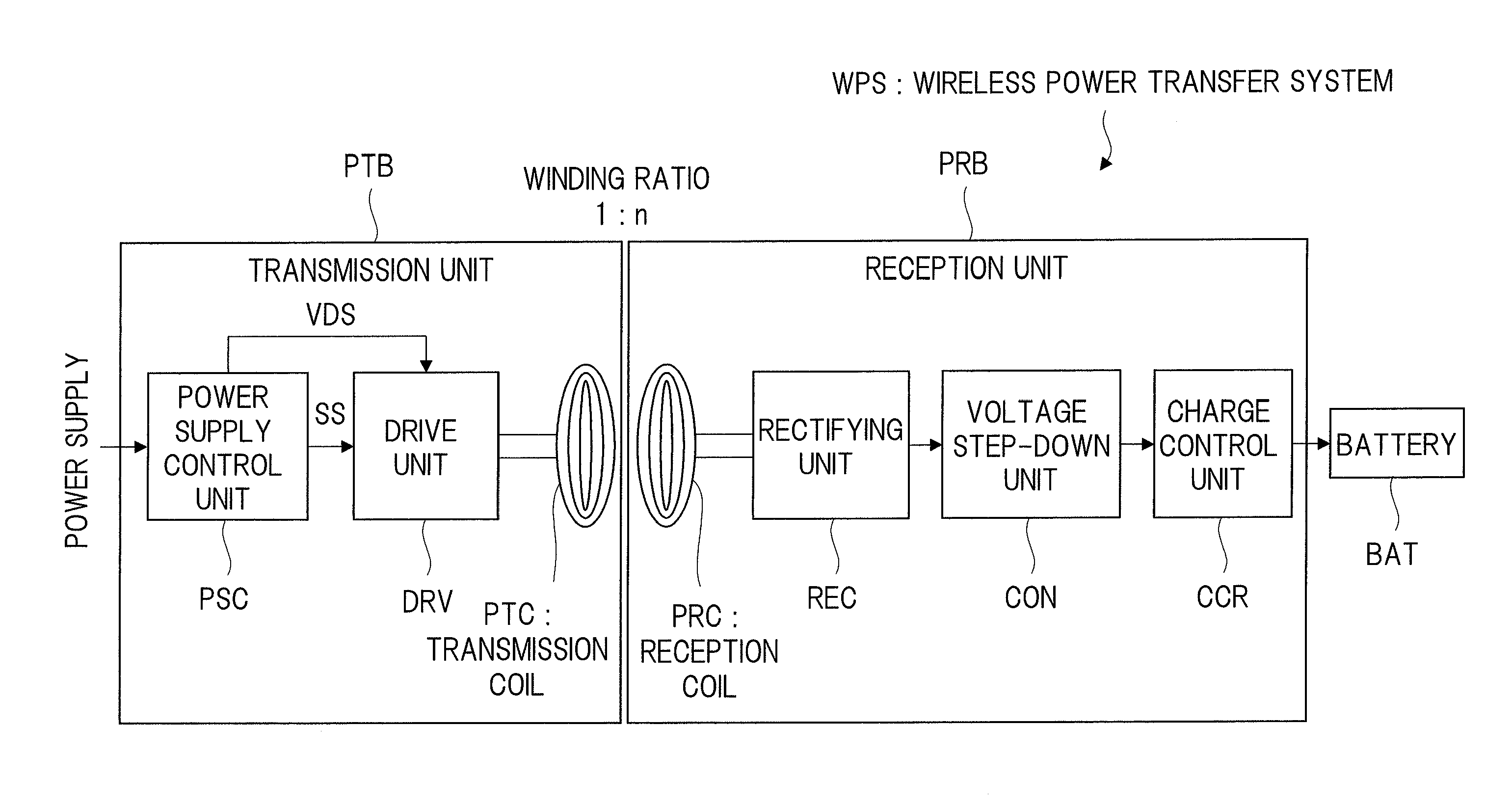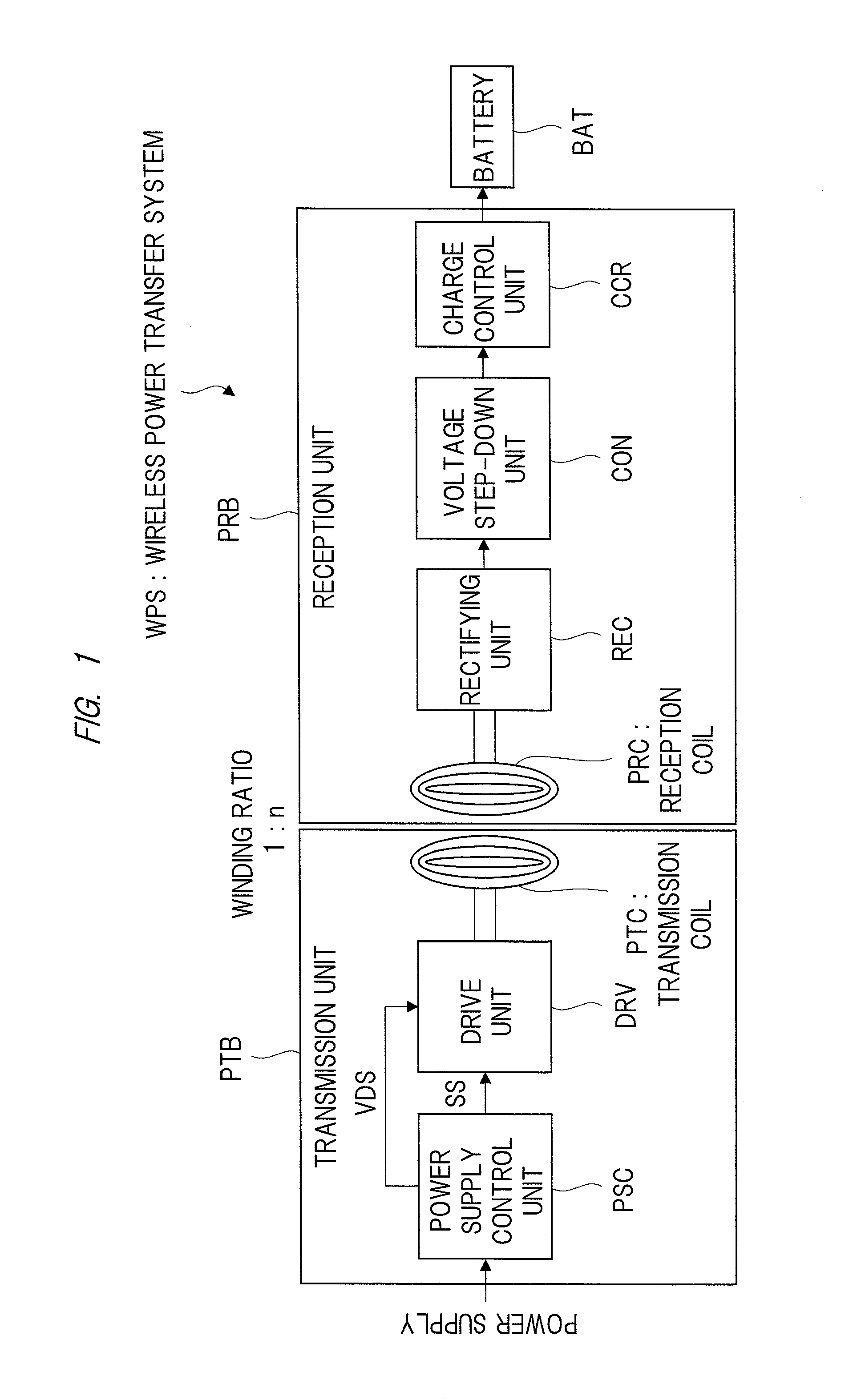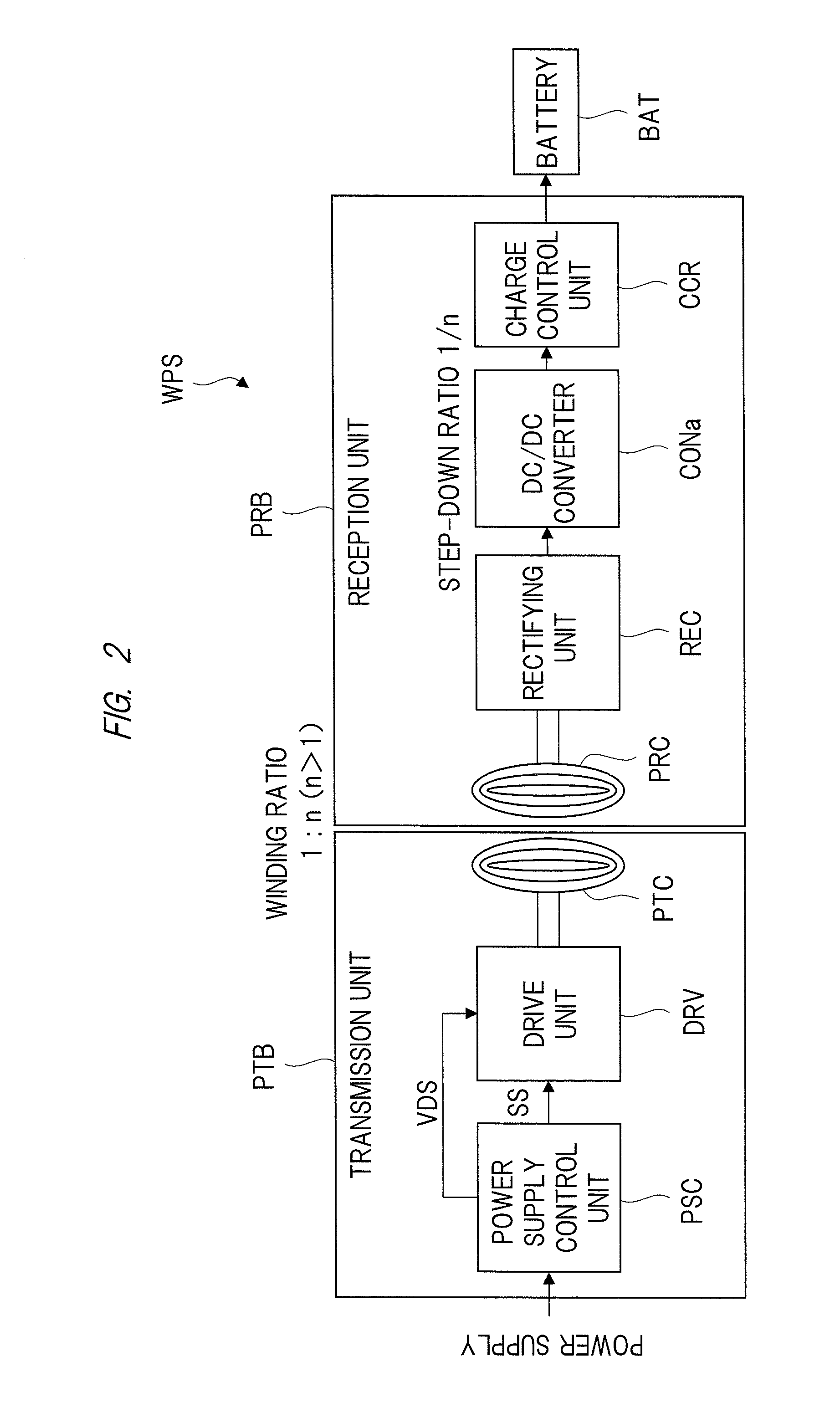Wireless charging system
a charging system and wireless technology, applied in the direction of transportation and packaging, transmission, sustainable buildings, etc., can solve the problems of reducing the charging efficiency, increasing the loss amount following the increase of the charging current, and high temperature of the lithium ion battery, so as to improve the charging efficiency
- Summary
- Abstract
- Description
- Claims
- Application Information
AI Technical Summary
Benefits of technology
Problems solved by technology
Method used
Image
Examples
first embodiment
[0034]
[0035]A summary of the embodiments is a wireless charging system (wireless charging system WPS) having a power transmission unit (transmission unit PTB) and a power reception unit (reception unit PRB). The power transmission unit transmits power, and the power reception unit receives the power transmitted from the power transmission unit in a non-contact manner and supplies the power to a reception-side load (battery BAT).
[0036]The power transmission unit has a transmission coil (transmission coil PTC) for generating a magnetic field based on an alternating voltage applied thereto. The power reception unit has a reception coil (reception coil PRC), a rectifying unit (rectifying unit REC), and a voltage step-down unit (voltage step-down unit CON).
[0037]A winding ratio of the transmission coil and the reception coil is 1:n. Moreover, n is an integer larger than 1.
[0038]Hereinafter, based on the summary described above, embodiments will be described in detail.
[0039]
[0040]FIG. 1 i...
second embodiment
[0093]In a second embodiment, another specific configuration example of the wireless charging system WPS in FIG. 1 will be described.
[0094]
[0095]FIG. 6 is an explanatory diagram illustrating an example of a configuration in a wireless charging system of a constant voltage type according to the second embodiment.
[0096]In this case, a wireless charging system WPS steps down a direct voltage obtained by a rectification by a rectifying unit REC to a voltage level at a substantially constant level previously set and outputs and supplies the direct voltage to a charge control unit CCR. This wireless charging system WPS of the constant voltage type is composed of a transmission unit PTB and a reception unit PRB as illustrated in FIG. 6. A configuration of the transmission unit PTB is same as that of the transmission unit PTB in FIG. 1 of the first embodiment.
[0097]In addition, in the configuration of the reception unit PRB, as the voltage step-down unit CON in FIG. 1 of the first embodimen...
third embodiment
[0107]In a wireless charging system according to a third embodiment, a voltage step-down unit (DC / DC converter CONa) for stepping down a direct voltage outputted from a rectifying unit steps down a voltage outputted from a rectifying unit to about 1−nth as large as the voltage.
[0108]Hereinafter, the third embodiment will be described in detail based on the summary described above.
[0109]
[0110]In the third embodiment, a detailed configuration of the wireless charging system of the constant-rate stepping down type in FIG. 2 of the first embodiment will be described.
[0111]FIG. 7 is an explanatory diagram illustrating an example of a configuration of the wireless charging system of the constant-rate stepping down type according to the third embodiment.
[0112]The wireless charging system WPS is, as illustrated in FIG. 7, composed of a transmission unit PTB and a reception unit PRB. The transmission unit PTB includes, in the same manner as the transmission unit PTB in FIG. 2, a power supply...
PUM
 Login to View More
Login to View More Abstract
Description
Claims
Application Information
 Login to View More
Login to View More - R&D
- Intellectual Property
- Life Sciences
- Materials
- Tech Scout
- Unparalleled Data Quality
- Higher Quality Content
- 60% Fewer Hallucinations
Browse by: Latest US Patents, China's latest patents, Technical Efficacy Thesaurus, Application Domain, Technology Topic, Popular Technical Reports.
© 2025 PatSnap. All rights reserved.Legal|Privacy policy|Modern Slavery Act Transparency Statement|Sitemap|About US| Contact US: help@patsnap.com



